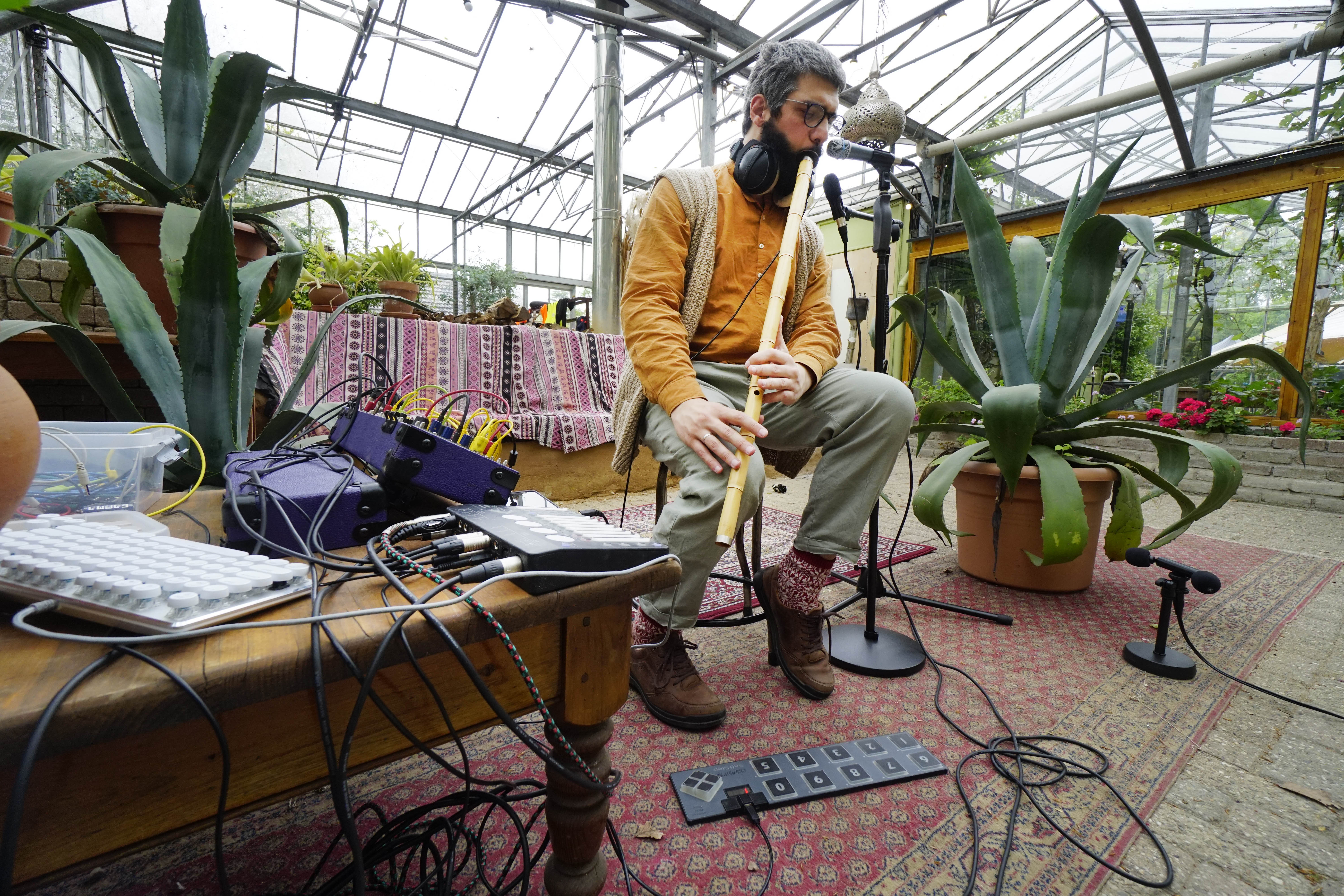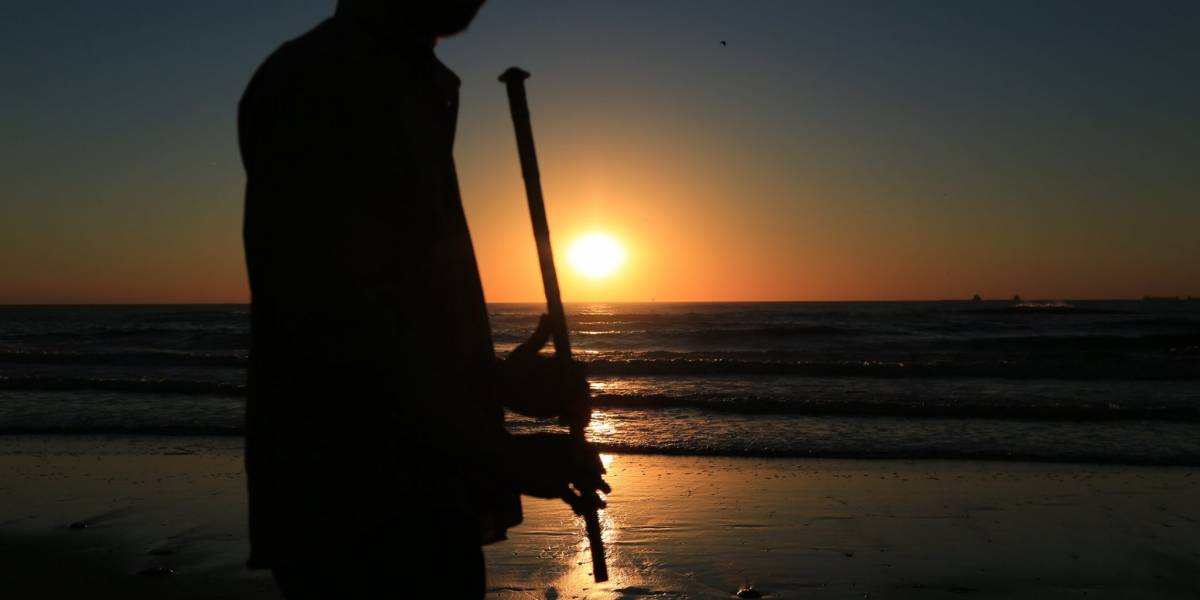Cengiz Arslanpay: Tradition calls for contemporary interpretation
Text: Ton Maas
A musician with Turkish roots who plays a centuries-old Turkish instrument. Nothing unusual about that, you might think, but it’s not that simple. Dutch-born Cengiz Arslanpay spent his teenage years in Hardinxveld-Giessendam, in the heart of the Dutch Bible Belt. Since the Arslanpays were the only Turkish family for miles around, all his friends were Dutch.
As a teenager Cengiz liked to listen to music, but preferably heavy metal, psychedelic rock or abstract jazz. So his first instrument was a guitar. A broken arm put a spanner in the works and forced him to look for something else. That’s when the piano entered the picture, followed by piano lessons, which introduced him to Beethoven and other composers. He was twenty when he entered the conservatorium to study electronic music and sound design. Not very Turkish in other words.
That changed after father and mother Arslanpay moved back to Turkey and Cengiz went into rented accommodation. Since he wasn’t keen on an electric piano, he went in search of a qanun and found one he could purchase at a bargain price. A Turkish instrument, yes, but Cengiz still liked to play Bach on it. It’s well known that a bargain isn’t always the best buy, and intensive use of the qanun shortened its life span. So after a few years he found himself without an instrument.
A friend living in the same student accommodation as Cengiz had a ney and asked him if he might possibly have any use for it. It proved to be a revelation. Cengiz: ‘I was immediately gripped by it, partly because of my background in sound design. A flute is a fascinating instrument: simply a hollow pipe whose sound is determined by nothing but resonance. Moreover, it’s a highly physical instrument, much more so than the guitar or piano. Seemingly simple, but in practice quite difficult because of the many factors that influence the sound.’
Mesmerized by the ney
You only need to ask Arslanpay one question and the stories start to flow. To start with, the material the ney is made of: giant reed. In the case of the Turkish ney, the reed has to come from a very specific place in Turkey where the river flows slightly upwards instead of downwards. Tradition has it that the power needed for that determines how the reed grows. The reed is then selected by weight, because the lightest reed with the thinnest surface is the most suitable.
Unlike the Western recorder or transverse flute, the ney has just six or seven holes and no valves at all. You have to leave one or more openings partly uncovered (half fingering) to achieve certain sounds.
To master the ney as an instrument, you must learn to breathe from the stomach. That enables you to increase the pressure and also produce lower tones. Cengiz: ‘You can clearly see that a baby breathes with its whole body. When they grow up, most people use their lungs only. They become very good in rapidly storing air that is immediately reproducible, but it’s actually a panic mechanism. Since we breathe in that way all the time, as adults we maintain a certain level of stress. The ney has taught me to breathe from my stomach once again. That has calmed me down and I’m better able to reflect. So you could in fact view the ney as a kind of tool for meditation.’

Fascination for tradition
The more Cengiz immersed himself in his Turkish roots, the more fascinated he became with the Ottoman musical tradition: ‘The division of the octave is different in Turkey than it is in the West, and the Persian and Arab divisions are also different. Long ago in Istanbul they developed a way to integrate all that varied heritage – because that’s what it is – into one single system. That gave rise to the vast Ottoman music culture, which comprises all those separate traditions – Old Persian, Byzantine, Arabic and so on.’
‘Look at the original names of all those composers at the court of the sultan, and you discover that they came from Armenia, Syria, Greece and Moldavia. Ali Ufki, perhaps the most famous of them all, came from Poland, and his real name was actually Wojciech Bobowksi. In the seventeenth century he rewrote all sorts of psalms in the maqam melodic system and also translated the Bible into Turkish. And the most important standard work about Ottoman music was written by a Moldavian prince who had studied in Istanbul.’
Intermezzo
During his studies at the conservatoire, Cengiz felt he needed some sort of reorientation. So he interrupted his course and spent a year studying cultural anthropology, searching for what he describes as the elements he missed in the building blocks of his own identity. But those interim studies also introduced him to ethnomusicology and he started to immerse himself in other traditions.
That’s how Arslanpay discovered that one ney is not like another, even though they are all made from reed (‘ney’ is the Persian word for reed). The Turkish differs from the Persian, which in turn differs from the Arabic. The Persian ney, which has no mouthpiece, is blown with the flute pressed against the teeth, while the Turkish and Arabic ney can only be touched with the lips. In contrast to the somewhat muffled sound of the Arabic ney, the Turkish ney has a separate mouthpiece – made of buffalo horn – that creates a more vibrant sound. As a musical omnivore and a genuine scholar, Arslanpay not only collects all these varieties but also plays them. He effortlessly switches back and forth between the various playing techniques to demonstrate differences in sound and character.
Trust your intuition
Although completely self-taught, apart from those piano lessons as a youngster, Cengiz decided in the end to take lessons in how to play the ney, if only to put an end to his uncertainty. So he visited the world music department at Codarts in Rotterdam. Looking back on that experience, he comments: ‘One should understand that there are two concepts of play that, to some extent, complete oppose each other. The conflict centres on how to hit the notes. According to one school, you do that by moving your lips with your cheek muscles (tremolo), while the other school says you should do it by alternately blowing hard and soft (vibrato). When I played a piece with the vibrato technique, the tutor immediately ticked me off. Completely wrong! So I decided not to take any more lessons.’
For some years, however, Cengiz has been taking lessons in maqam. What he has chiefly discovered is that he was intuitively on the right track already. By simply listening carefully and then mimicking the sounds, you automatically start to understand the structure of the compositions. A maqam is not the same as a scale but, rather, a series of notes within a certain system. The difference with the Western scale becomes clear when you transpose a melody to another key, because with the maqam you immediately find yourself in another system, which lends the music a completely different character.
Contemporary translations of tradition
Arslanpay regularly works with musicians from the world of impro, such as violist Oene van Geel, organist Jacob Lekkerkerker and bass saxophonist Klaas Hekman. He’s also part of a trio that plays improvised music on the basis of Ukrainian calendar rituals, and he frequently plays solo concerts on the ney and modular synthesizer. In addition, he is active as a composer for short films and he worked on a commissioned composition for Le Guess Who festival.
For Cengiz, tradition is a rich source of inspiration, but it must never become a straitjacket. Cengiz: ‘Culture is fluid. People who stick to traditions often have no idea what they are actually preserving. It’s usually an illusion they are clinging onto, something that never existed in the first place. For me, tradition has a right to exist only if it is constantly reinterpreted in the present.’



